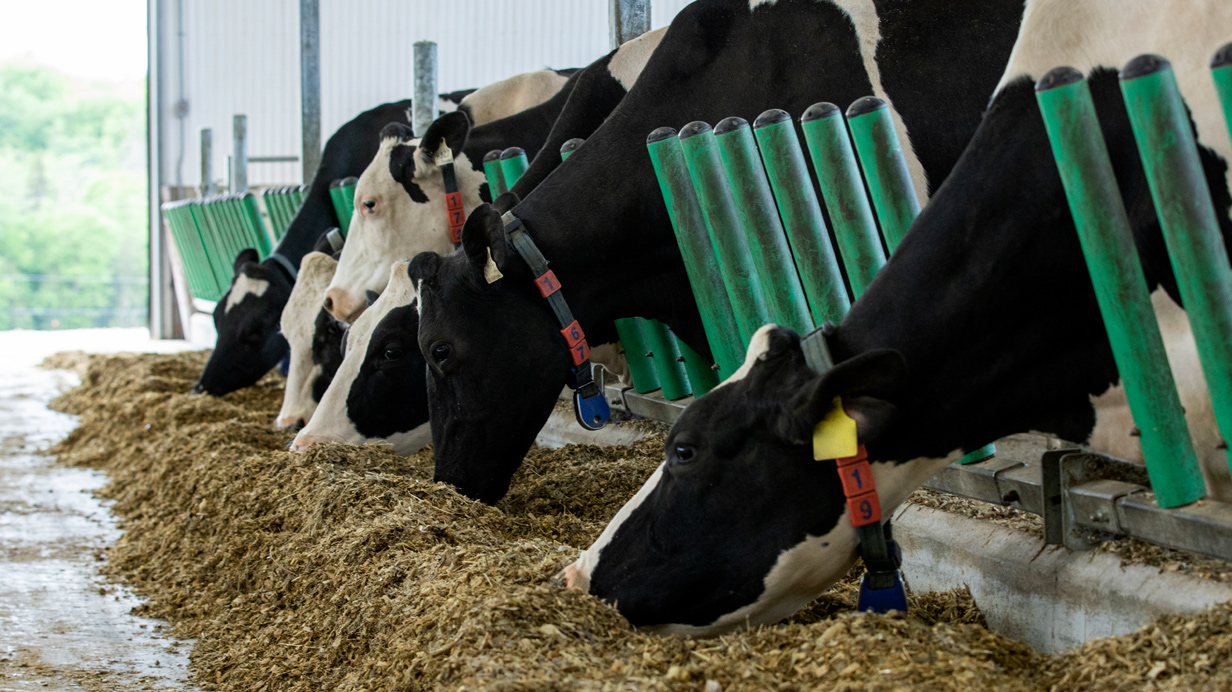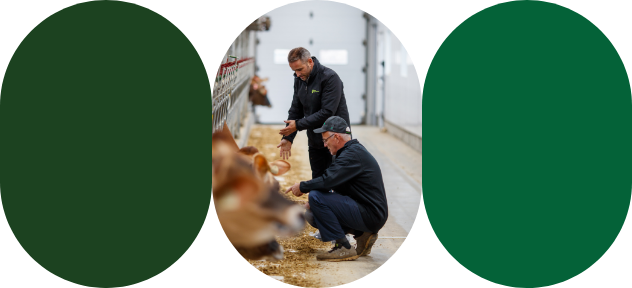What is digestible and indigestible fibre effectiveness?
The most complicated forage element to replace isn’t protein or energy, but fibre. This is apparent when precipitation is less frequent and the volumes of forage available to feed specific herds are limited. To have an effective diet, it’s important to understand the concepts of digestible and indigestible fibre effectiveness.
The chemical and physical characteristic of fibre—combining factors of digestibility, effectiveness and encumbrance—are very difficult to find in other ingredients With the limited quantity of many sources of energy, it has become even more important to make enough forage to ensure cows continue to consume. This is such an essential part of producing kilos and fat.
Digestible fibre
The digestible fraction of fibre (NDFd 30 h) is the portion of fibre that can potentially ferment in the rumen. The higher it is, the higher the energetic value of the forage, and generally, the greater the cows’ capacity for consumption. NDFd ruminal fermentation produces volatile fatty acids in the rumen, predominantly acetic acid, the necessary precursor for de novo fatty acid synthesis, an important component of milk fat.
Nowadays, farmers are often reminded that adding enough digestible fibre to forage can ensure good fat production. However, fibre digestibility can fluctuate significantly from one forage to another, even those with the same NDF value. This explains why two rations with the same feed NDF content won’t necessarily produce the same milk or even the same fat.
One key factor is maturity levels at the harvest. Some of this feed NDFd can be supplemented by incorporating NDFd from various by-products or mixes formulated to guarantee consistent digestible fibre portions. These fibrous by-product mixes can be a cost-saving solution.
For cows at a later stage of lactation, increasing NDFd proportions in rations can channel consumed energy towards milk production rather than weight gain, which seed starch tends to do. For these cows, the choice between starch or digestible fibre is a question of the intended body condition.
Indigestible NDF
The opposite of digestible fibre in indigestible, or undigested, NDF (uNDF 240 h), namely the fibre that never ferments in the rumen, even after 240 hours. The higher the uNDF value, the lower the energetic value of the forage and the higher its ruminal encumbrance, thus lowering consumption, particularly during early lactation.
The Miner Institute’s initial research findings indicate that a high-producing cow receiving a corn and grass silage-based ration can ingest up to 0.45% of its live weight in uNDF 240 h fibre, i.e., approximately 2.9 kg per day for a 650-kg cow. If the grass silage consists of 57% NDF and 16% de uNDF, the cow can consume 18 kg (on a dry matter basis). However, if the uNDF is 22% (less digestible forage), the cow will in theory only be able to ingest 13 kg of fibre.
Fibre effectiveness
This relationship between uNDF 240 h, consumption and milk production becomes clearer when adding chop length to the equation, i.e., the notion of fibre effectiveness.
When forages are much less digestible, they can be chopped slightly shorter or served in slightly smaller quantities (see graphs 1 and 2). It should be noted, however, that to date, all research has used hay or grass/corn mixes.
The goal should not be to reduce rations to the minimum uNDF 240 h either. This indigestible fibre can still contain what is called effective fibre, meaning it maintains a good ruminal mat while stimulating healthy chewing and fermentation. As a result, it should be included in rations in small amounts. In rations with a grass/corn silage base, this proportion seems to be around 0.25% of cow live weight, i.e., 6% to 8% of the dry matter (DM) consumed by cows weighing 650 kg.
It is this portion of feed fibre that is extremely difficult to replace in rations when there are forage shortages, including straw. When effective fibre is lacking, fermentable starches—and thus the quantity of acidogenic by-products produced—should be limited to keep ruminal pH stable.
Sollio Agriculture’s ARA concept
Through research conducted by the Cooperative Research Farms network, Sollio Agriculture has developed the ARA concept, which aims to maintain rumen wall epithelium function when cows consume rations that are higher in seeds.
In a test conducted in 2013 on 40 cows producing between 46 kg and 48 kg of milk in early lactation, the ARA concept led to significant increases in kilos of fat produced (graph 3). The concept has proven its worth in the field as well. While it doesn’t eliminate the importance of properly managing feed, the ARA concept encourages proper production efficiency and fat synthesis in concentrate-rich rations.
Other key takeaways:
• Target the right forage
• Ensure rations are carefully sorted to stimulate the production of kilos and fat
• Offer consistent rations, and ensure they are consumed consistently
• Avoid overpopulation
• Ensure sufficient trough space and water
• Turn on the fans to maximize consumption and reduce heat stress
Graph 1. Relationship between physically effective indigestible fibre and energy-correlated milk production
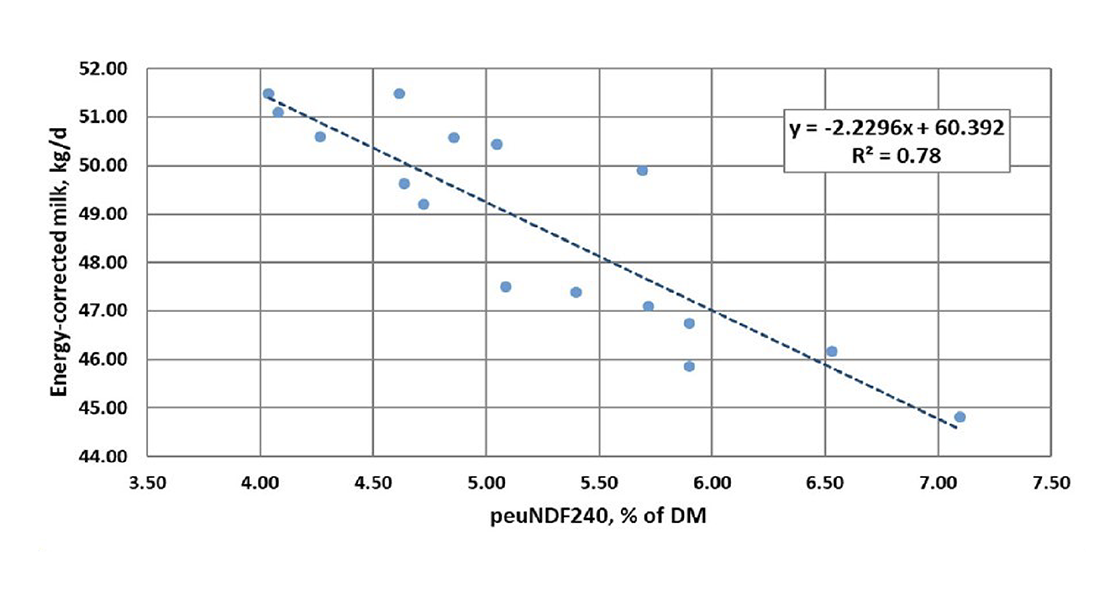
Graph 2. Relationship between physically effective indigestible fibre and voluntary dry matter intake
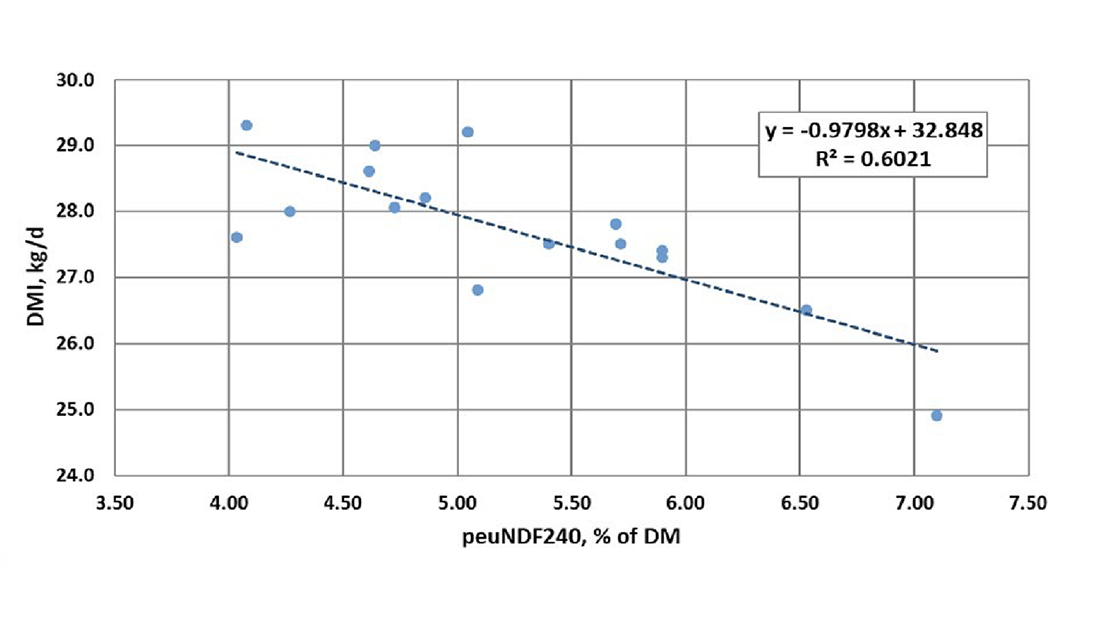
peuNDF 240 = uNDF 240 * peNDF (%NDF) > 4 mm (3 trays)
Graph 3. Impact of ARA concept on kilos of fat produced
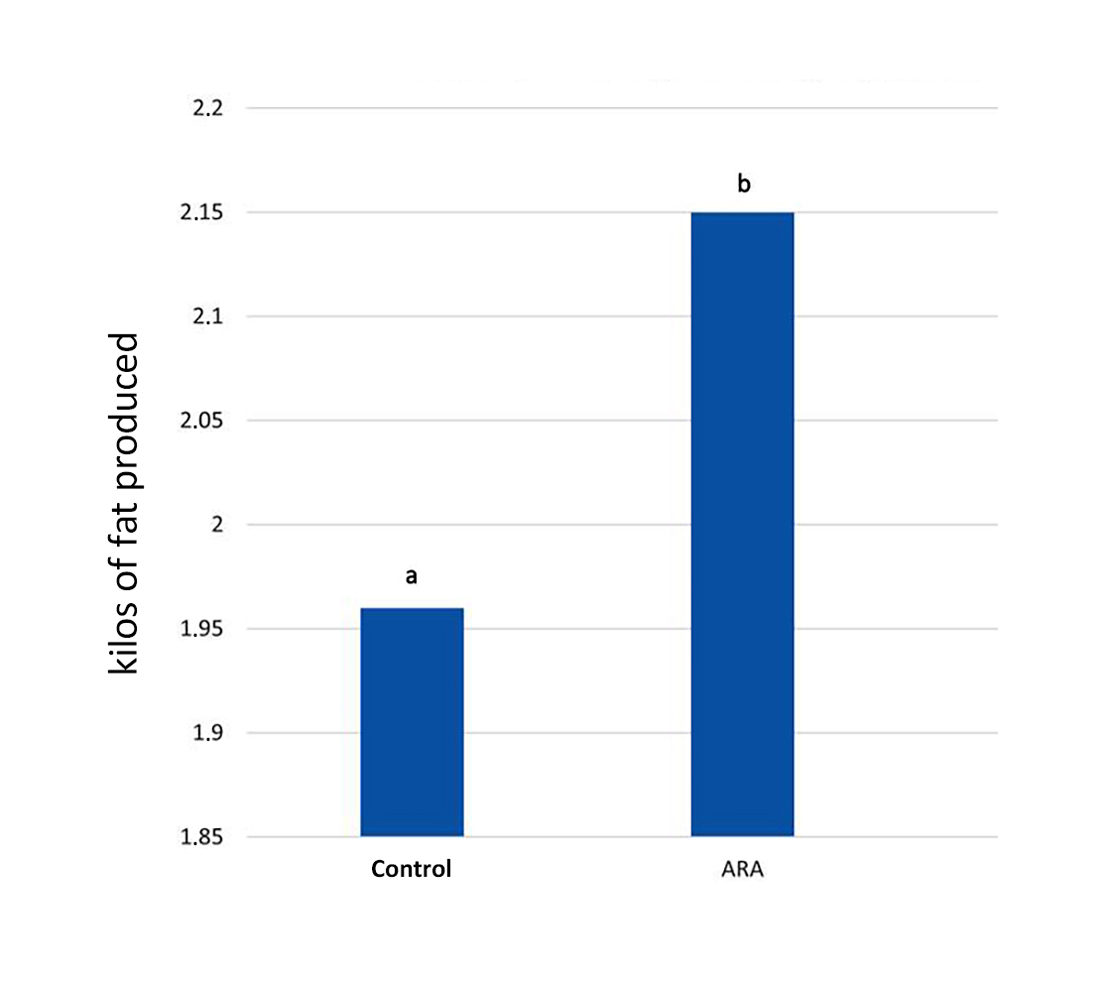
The various letters above the bars show that the results are significantly different.
Source: This article was originally published in French in the May–June 2021 issue of Coopérateur magazine.

